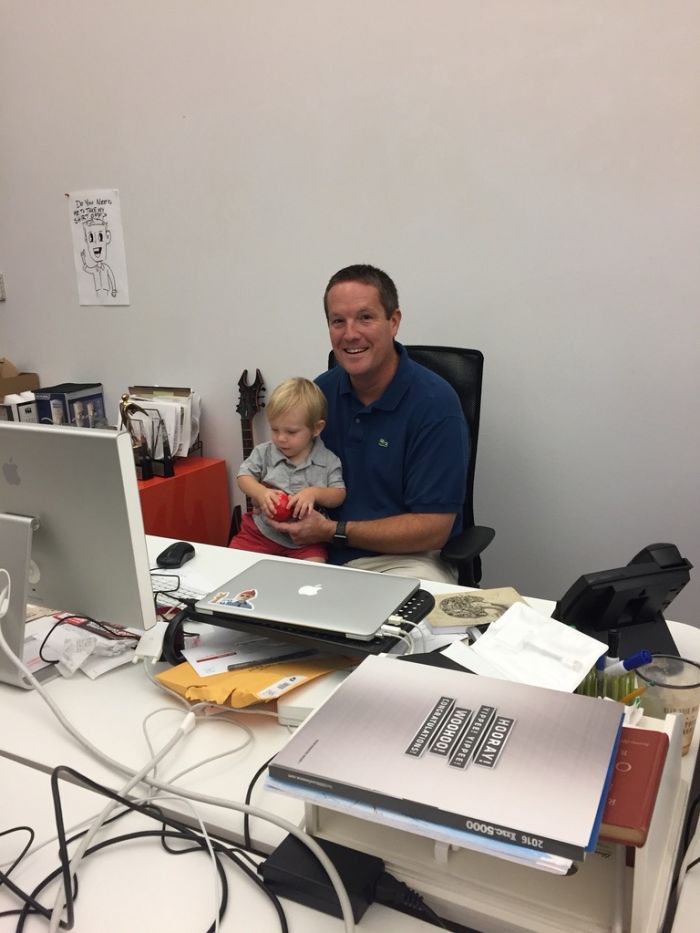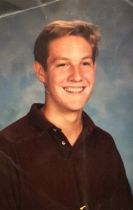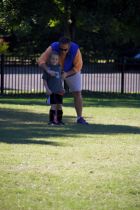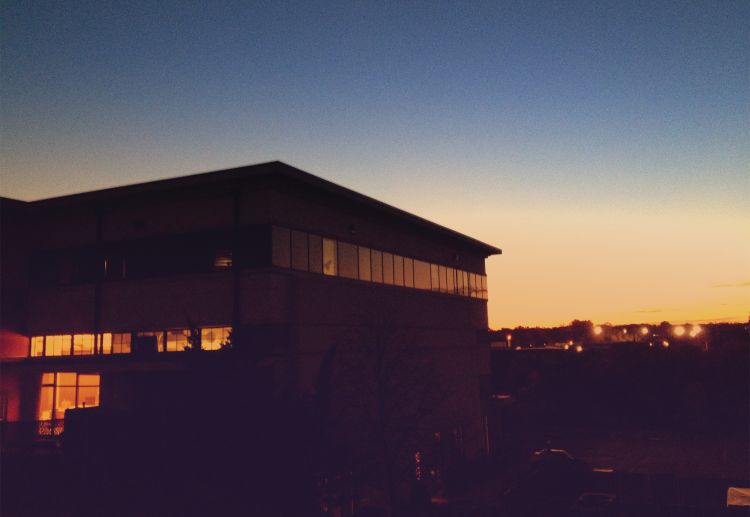We are a group of creative people who help organizations make their ideas beautiful.
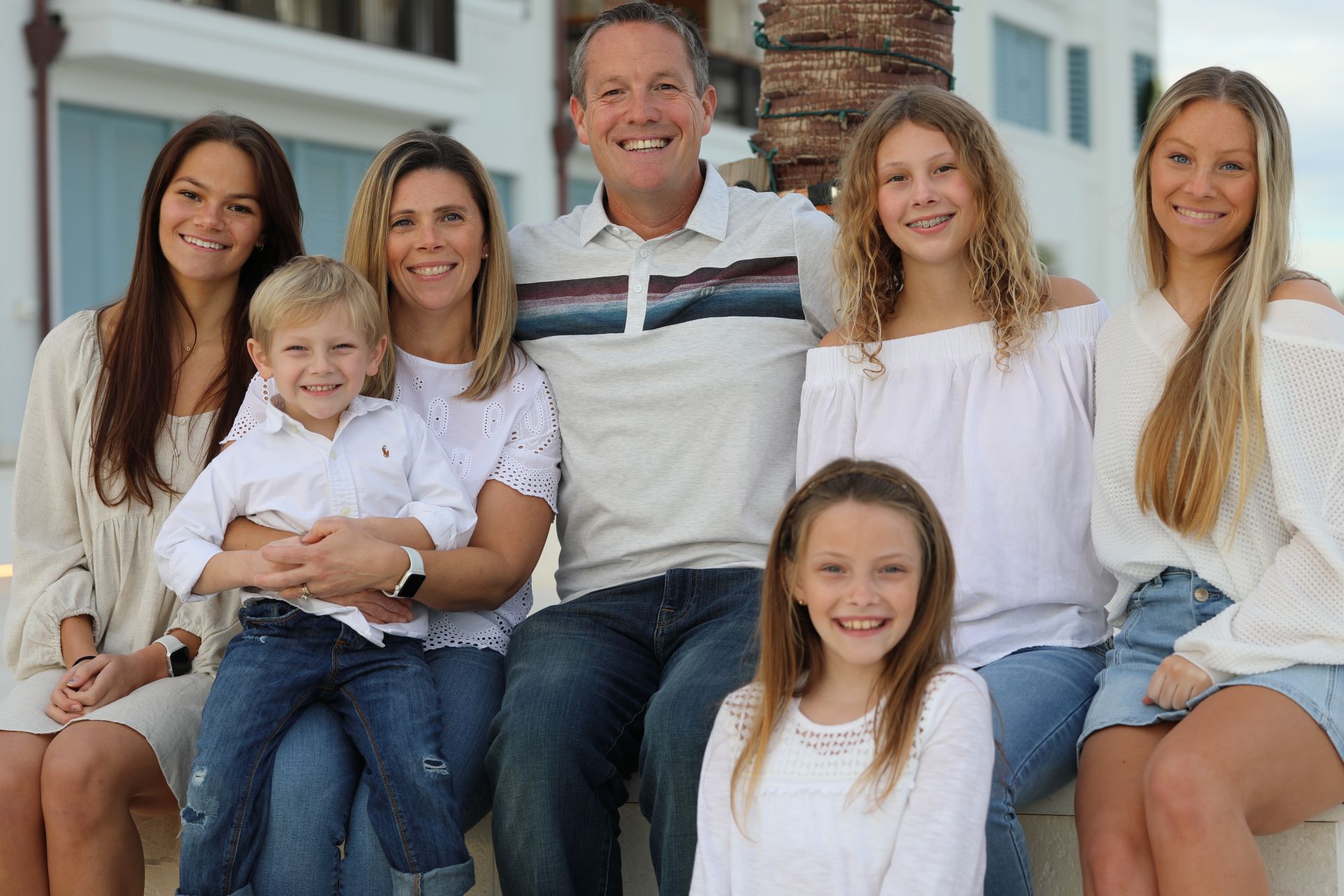
Gus
Hattrich
On my first day at Paradowski, I overheard two people having a very detailed conversation about a business concept called “Blazer Tag.” One person was arguing that it should be a place for businessmen to play laser tag on their lunch break, and the other person insisted it should be a bunch of kids in big suits playing regular tag. It was clear to me that one of these people was far more serious about Blazer Tag than the other. I didn’t know it then, but that person was Gus Hattrich.
In May of 2011, Gus Hattrich sat behind sliding glass doors on the second floor of a downtown office building. It was designed by a professional interior designer and had an art museum’s cold elegance. Inside Gus’s office was a stainless steel desk and little else. It reminded him ominously of an airplane wing. Just outside was a balcony where you could look down on the first floor. It was Gus’s first day as the president of Paradowski Creative. He was convinced he had made a huge mistake.

View from Gus' new office during construction at the end of 2009 — two years before his arrival.
Prior to Gus, Paradowski was showing the telltale signs of a business in trouble. Having invested significant financial resources towards the downtown office building, the owners hired Gus not to just run the company, but to save it.
Gus needed a job. With a lingering bitterness from a recently dissolved business partnership, he wanted to work where he could make a positive and sizable impact on a company’s vision. He wanted to influence culture with the lessons he’d learned the hard way. More importantly, he didn’t want to work for anyone.
“Employees stopped and watched their boss, barely two months into the job, walk down the stairs with a box of personal effects.”
When Gus took over in 2011, the staff regarded their new president with a healthy dose of suspicion. Most of them had worked there for a long time, a few nearly 20 years. Some resisted the changes he was making on principle.
After just a few weeks, Gus was overwhelmed. He saw people who were largely unmotivated and in some cases, ill-equipped to perform their job. Closing down the agency was a worst case scenario that seemed to grow more likely every day.
Gus slumped over in his chair inside his pristine downtown office, elbows propped on a fancy desk, his face resting in his hands. He got up and gathered his things. Employees stopped and watched their boss, barely two months into the job, walk down the stairs with a box of personal effects. He stopped at an empty desk near a few young creatives and sat down.
He began to unpack.
“Gus gave me my first real job. What I know about this business I learned from him.
He gets excited about the work we do, but he really gets excited about the people who make it. He knows our motivations, fears, dreams, and passions.
Gus isn’t just a boss. Gus is family.”
— Julia Ahrens, Account Director
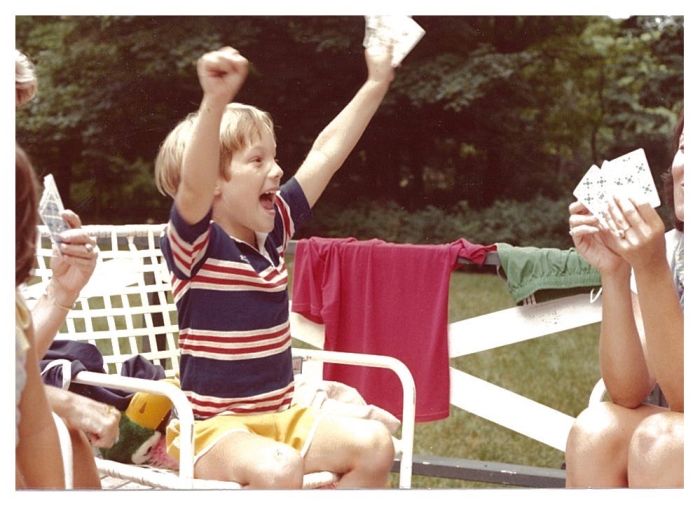
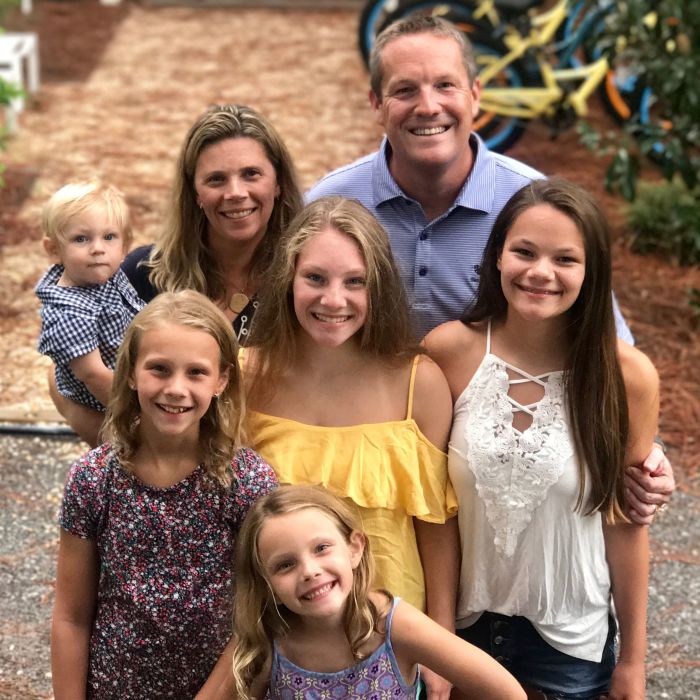
“Gus is a 17 year old trapped in the body of a successful businessman.
On the same day of directing a complicated negotiation, he’ll also take a selfie with a phone left in a conference room and set it as wallpaper. During a round of golf, I’ve seen him hit a perfectly straight 340 yard drive and then turf out so badly the ball ended up 10 feet behind him.
He’s vulnerable with people and it disarms them. We love him for it.”
— Tim Pickett, Director of Project Management
Soon after Gus moved out of his second floor office to work among the staff, he hired Ray Smith, a front end developer referred by a colleague. He was 20 years old, from North St. Louis, black, and entirely self-made. At the time, there wasn’t a lot of work for Ray to do, but Gus immediately recognized his talent. Ray flourished at Paradowski, but in 2013, he was diagnosed with cancer. Ray underwent treatment, beat it, and returned to work with much celebration.
Six months later, however, Ray’s cancer returned and he passed away soon after coming out of remission. Gus closed the office for two days.

A small group of about 18 Paradowski employees went to where Ray had lived with his family in Ferguson. They didn’t really know how to help, so they took turns bringing the family meals everyday and also busied themselves with cutting the grass and other yard work before Ray’s funeral. In the middle of the backyard of Ray’s home, with Paradowski employees cutting down trees and planting flowers, Ray’s parents insisted they hold hands and pray together.
Gus looked around at the circle of bowed heads, the nakedly emotional faces of his employees. “This,” he thought, “This is the company I want to work for.”
In 2012, Paradowski was operating on a razor’s edge. Still in their downtown location, Gus knew for the business to succeed, he would need to start from scratch and completely change the dynamic. He led the owners through the sale of the agency, as a last resort to try and save the company.
Under new ownership, Paradowski Creative was reborn with vision Gus had been developing for most of his career. Gus called in a favor and set up shop at Owen Ridge in the St. Louis suburbs. Their previous office building was professionally and clinically curated. This would be different.
“Make this a place you want to go to every day,” he charged his designers. And they did.

“After we moved from our downtown location, a few of us went to lunch at a place nearby for all-you-can-eat wings.
We had a contest who could eat the most and Gus came in second. It had to have been in the mid-30s. I’m not sure a lot of people have bosses they can say that about.”
— Tony McAley, Associate Creative Director
“Last summer Gus was dismayed at what local exterminators were charging to guard against mosquitos so he started his own business called What the Fog. Everyone thought it was a joke until he texted me one day ‘Get the fog inside.’ Sure enough, he came around in a few minutes, fully decked out and sprayed my yard.
As unusual as it was, I wasn’t exactly surprised. That’s just who Gus is.”
— Annie Kayser, Account Supervisor
Maybe it was moving into this new space that signaled to all the employees that Paradowski Creative had come of age. Maybe it was a little later on, winning a succession of new business that guaranteed their survival. Or maybe it was that afternoon in North City. Dirty hands clasped and heads bowed. A small group of people who had just started to understand a code by which Gus Hattrich lives his life—that the things we make will never be more important than the people who make them.
